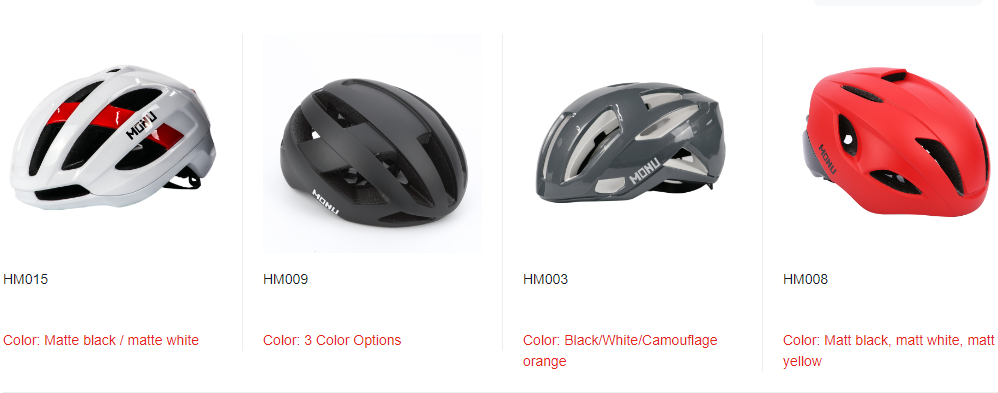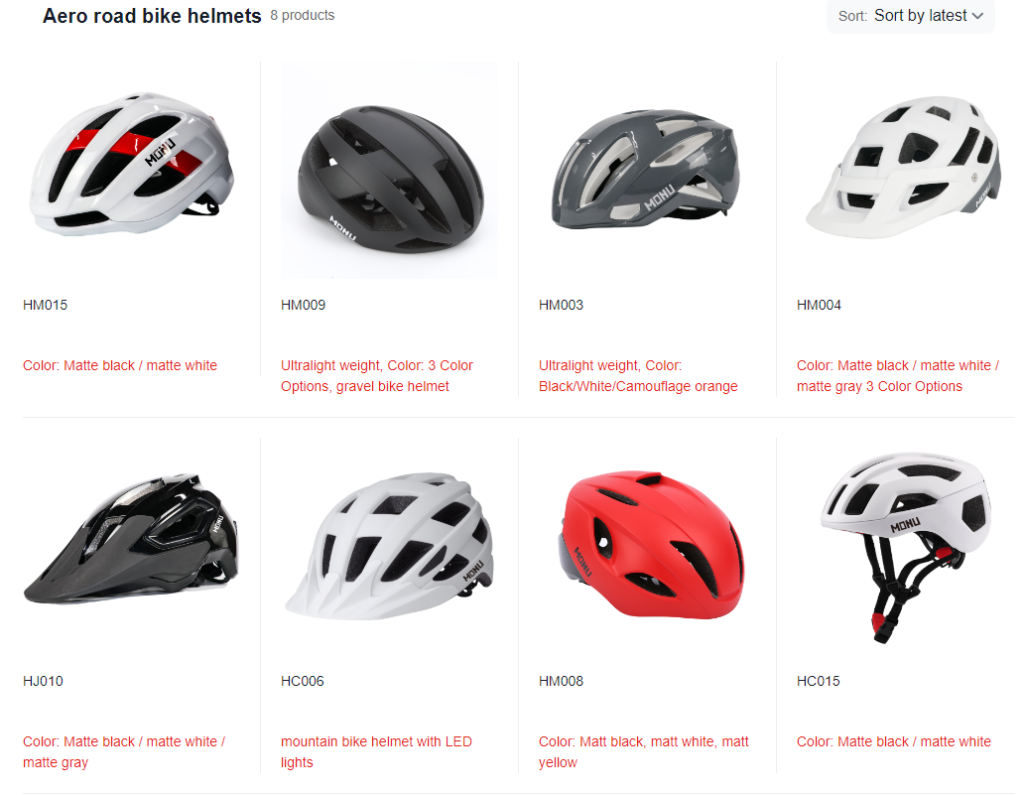Best Road Bike Helmets 2024: Top Picks for Safety and Style
If you are an avid road cyclist, you know that wearing a helmet is a non-negotiable safety measure. A good helmet can protect your head from serious injury in the event of a crash or fall. But with so many different options on the market, it can be overwhelming to choose the right one.

That’s where we come in. In this article, we will be discussing the best road bike helmets of 2024. We’ve scoured the internet and consulted with experts to bring you a comprehensive list of the top helmets available. Whether you prioritize safety, comfort, aerodynamics, or style, we’ve got you covered. So sit back, relax, and let us help you find the perfect helmet for your cycling needs.
Top Rated Helmets of 2024
When it comes to choosing the best road bike helmet for your cycling adventures in 2024, it’s essential to prioritize safety, comfort, and performance. Several top-rated helmets have emerged this year, offering a blend of innovative features and reliable protection.
One standout option is the Backcountry® Road Bike Helmet, known for its exceptional safety standards and aerodynamic design. This helmet combines lightweight construction with advanced impact protection, making it a popular choice among cyclists looking for reliable headgear.
Another top-rated helmet to consider is the Best Cycling Helmet of 2024, recognized for its cutting-edge technology and superior ventilation system. This helmet is designed to enhance airflow and reduce wind resistance, providing a comfortable and efficient riding experience.
Additionally, the Best Bike Helmets for Road Cyclists in 2024 offer a diverse range of lightweight, aero, and all-rounder options suitable for every rider. These helmets have undergone rigorous testing and evaluation, ensuring that they meet the highest industry standards for safety and performance.
When selecting a road bike helmet, it’s crucial to prioritize your specific needs and preferences, whether it’s enhanced aerodynamics, optimal ventilation, or customizable fit. By considering these top-rated helmets of 2024, you can make an informed decision to elevate your cycling experience while prioritizing safety and comfort.
Safety Standards and Certifications
When it comes to road bike helmets, safety is paramount. There are several safety standards and certifications that you should look for when choosing a helmet. In this section, we’ll discuss some of the most important safety standards and certifications that you should be aware of.
MIPS Technology
MIPS stands for Multi-directional Impact Protection System. This technology is designed to reduce rotational forces that can occur during an impact. It works by allowing the helmet to rotate slightly on the head upon impact, which can help to reduce the amount of rotational force that is transferred to the brain. Many of the best road bike helmets of 2024 feature MIPS technology.
CPSC Compliance
The Consumer Product Safety Commission (CPSC) is a U.S. government agency that regulates the safety of consumer products. Helmets that are sold in the United States must comply with CPSC safety standards. This means that they have been tested and certified to meet certain safety requirements. Look for a CPSC sticker on the inside of the helmet to ensure that it meets these standards.
CE EN1078 Certification
CE EN1078 is a European safety standard for helmets. Helmets that are sold in Europe must comply with this standard. Like the CPSC standard, helmets that meet the CE EN1078 standard have been tested and certified to meet certain safety requirements. Look for a CE EN1078 sticker on the inside of the helmet to ensure that it meets these standards.
By choosing a helmet that meets these safety standards and certifications, you can be confident that you are getting a helmet that has been tested and certified to meet certain safety requirements. Remember, safety should always be your top priority when choosing a road bike helmet.

Aerodynamics and Helmet Design
When it comes to road bike helmets, aerodynamics is a key factor to consider. A helmet that is designed with aerodynamics in mind can help reduce drag and improve your speed on the road. Here are some important things to keep in mind when choosing an aerodynamic road bike helmet.
Ventilation Systems
One of the challenges of designing an aerodynamic helmet is balancing aerodynamics with ventilation. A helmet with poor ventilation can lead to discomfort and overheating, especially during hot summer rides. However, a helmet with too many vents can negatively impact aerodynamics.
To strike the right balance, many manufacturers use advanced ventilation systems that allow air to flow through the helmet while still maintaining an aerodynamic profile. Look for helmets with strategically placed vents that promote airflow while minimizing drag.
Aero vs. Road Helmets
It’s important to note that not all road bike helmets are designed with aerodynamics in mind. Some helmets, known as road helmets, prioritize ventilation and comfort over aerodynamics. These helmets typically have more vents and a less streamlined profile than their aerodynamic counterparts.
If you’re primarily concerned with speed and performance, an aerodynamic helmet is likely the way to go. However, if you prioritize comfort and ventilation, a road helmet may be a better fit for your needs.
Overall, when choosing a road bike helmet, it’s important to consider your own priorities and preferences. Whether you opt for an aerodynamic helmet or a road helmet, make sure to choose a helmet that fits well and provides adequate protection on the road.

Materials and Construction
When it comes to road bike helmets, the materials and construction play a crucial role in determining the overall safety and performance of the helmet. In this section, we will take a closer look at the two most common types of helmet construction, In-Mold and Carbon Fiber, and their benefits.
In-Mold Construction
In-Mold construction is the most common type of construction used in modern road bike helmets. This process involves fusing the outer shell of the helmet with the impact-absorbing foam liner during the manufacturing process. This creates a single, lightweight, and durable unit that offers excellent protection against impact.
One of the biggest advantages of In-Mold construction is its ability to create helmets with a sleek and low-profile design. The process allows for the creation of helmets that are both lightweight and strong, making them ideal for road cycling where aerodynamics are essential.
Carbon Fiber Benefits
Carbon fiber helmets are a popular choice among serious road cyclists due to their lightweight and strong construction. Carbon fiber is an incredibly strong and lightweight material that is used in a wide range of industries, including aerospace, automotive, and sports.
One of the biggest benefits of carbon fiber helmets is their ability to absorb and disperse impact energy. This is achieved through the use of multiple layers of carbon fiber, which work together to create a helmet that is both strong and flexible.
Carbon fiber helmets also offer excellent ventilation, which is essential for road cyclists who need to stay cool and comfortable during long rides. The material allows for the creation of large, strategically placed vents that help to channel air through the helmet and keep the rider’s head cool.
In summary, best road bike helmets 2024 In-Mold and Carbon Fiber are the two most common types of helmet construction used in modern road bike helmets. Both offer unique benefits, including lightweight construction, sleek design, and excellent impact protection. Ultimately, the choice between the two will depend on your personal preferences and budget.
Fit and Comfort Features
When it comes to road bike helmets, fit and comfort are two of the most important factors to consider. A helmet that doesn’t fit properly or is uncomfortable to wear can distract you from your ride and even compromise your safety.
Adjustment Mechanisms
One of the most important fit features of a road bike helmet is its adjustment mechanism. Most helmets come with a dial or a ratchet system at the back of the helmet that allows you to adjust the fit to your head size. Look for a helmet with a mechanism that is easy to use and provides a secure fit. Some helmets also come with adjustable straps that allow you to fine-tune the fit around your chin and ears.
Padding and Liner Types
The padding and liner of a road bike helmet can also affect its fit and comfort. Look for a helmet with soft and comfortable padding that can wick away sweat and keep you cool during long rides. Some helmets also come with removable and washable padding, which can be convenient for keeping your helmet clean and fresh.
Another important feature to consider is the type of liner used in the helmet. Most helmets use EPS foam, which is designed to absorb impact in the event of a crash. However, some helmets use multi-density foam or other materials that can provide additional comfort and protection. Look for a helmet with a liner that is both comfortable and meets safety standards.
Overall, best road bike helmets 2024 Finding a road bike helmet that fits well and is comfortable to wear is essential for a safe and enjoyable ride. Consider the adjustment mechanisms, padding, and liner types when choosing a helmet that meets your needs.
Smart Helmets and Technology
As technology continues to advance, so do the features of road bike helmets. Smart helmets are becoming increasingly popular, offering a range of features that enhance safety and convenience for riders.
Integrated Communication Systems
One of the most notable features of smart helmets is the integration of communication systems. Some helmets come with built-in Bluetooth speakers and microphones, allowing you to listen to music or take phone calls while you ride. This feature is especially useful for commuters or those who spend long hours on their bike.
The KRACESS KRS-S1 Bike Helmet is a great example of a smart helmet with an integrated communication system. It features dual antenna Bluetooth connectivity, allowing you to stay connected even in areas with poor reception. The helmet also comes with a front-facing 1080P 60 fps camera, which captures high-quality video and photos of your ride.
Built-in Safety Lights
Another important feature of smart helmets is the inclusion of built-in safety lights. These lights help increase visibility, making it easier for drivers and other cyclists to see you on the road. Some helmets even come with turn signals, allowing you to signal your intentions to other road users.
The Lumos Matrix Smart Helmet is a great example of a helmet with built-in safety lights. The helmet features 77 LED lights, which can be customized to display different patterns and colors. The lights are also visible from all angles, ensuring maximum visibility on the road.
Overall, smart helmets offer a range of features that enhance safety and convenience for road cyclists. Integrated communication systems and built-in safety lights are just two examples of the many features available. When choosing a smart helmet, be sure to consider which features are most important to you and your riding style.